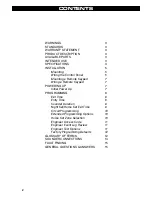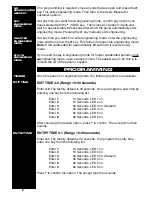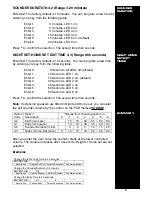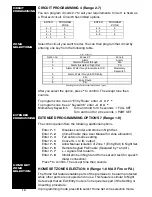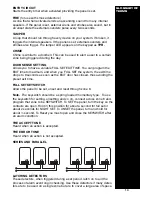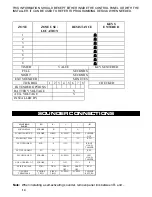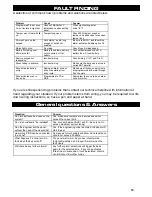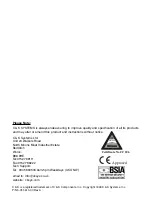
5
INSTALLATION
Locate the control panel out of sight, such as in a hall, or under stairs or a
cupboard, where connection is easy and the detector zone and mains cables
can be concealed. Avoid areas subject to high temperature or humidity, such
as next to a boiler/heater, in an airing-cupboard, or conservatory.
When fitting the keypad(s), site them where they are not visible from
outside, but where there is adequate light and accessibility for the user.
MOUNTING
1
Remove the lid screws and the lid.
2
Remove the printed circuit board (PCB) or keypad packaging.
3
Place the panel in the selected position and mark three fixing holes.
4
Mount the panel securely using all three mounting hole positions.
5
Attach tamper spring and mount PCB onto the support pillars.
Note:
for Mounting Remote Keypad see page 7.
WIRING THE CONTROL PANEL
WARNING MAINS CONNECTION
The panel must be permanently connected to the mains supply in
accordance with current IEE wiring regulation. A 5 amp fused spur,
installed by a qualified electrician, is strongly recommended. Any fault
which could be mains related must be diagnosed and corrected by a
qualified electrician to ensure continued safe operation.
CAUTION: Under certain circumstances the transformer metalwork
can reach 70° C. This is normal and well within prescribed limits.
Battery Connection
Maximum battery size is 12V 7.0Ah.
This panel requires a standby battery to be fitted to provide power in the
event of mains failure. A valve regulated lead acid battery must be used.
Detector Circuits
Connections are provided for up to eight detector circuits of which normally
closed detection devices must be used. A common tamper loop is provided
for all detection devices marked as 24 HR Tamper. One or more devices
may be connected to each alarm circuit. These should be connected in a
series configuration. These circuit connections are located to the bottom
right of the PCB (see Diagram B).
PIR Latch Line (L+)
In the event of two or more detectors (motion sensors or glassbreak
detectors) being fitted to any single zone, latching detectors should be
used. The L+ connection provides this function. It is low (0 V) when unset
and high (12 V) when set. It should be connected to the appropriate SET or
LATCH terminal in your detector. See glossary for explanation.
INSTALLATION
PROCEDURES
MOUNTING
PROCEDURE
MAINS
POWER
WARNING
BATTERY
SPECIFICATION
DETECTOR
CIRCUITS
LATCH LINE
DESCRIPTION


